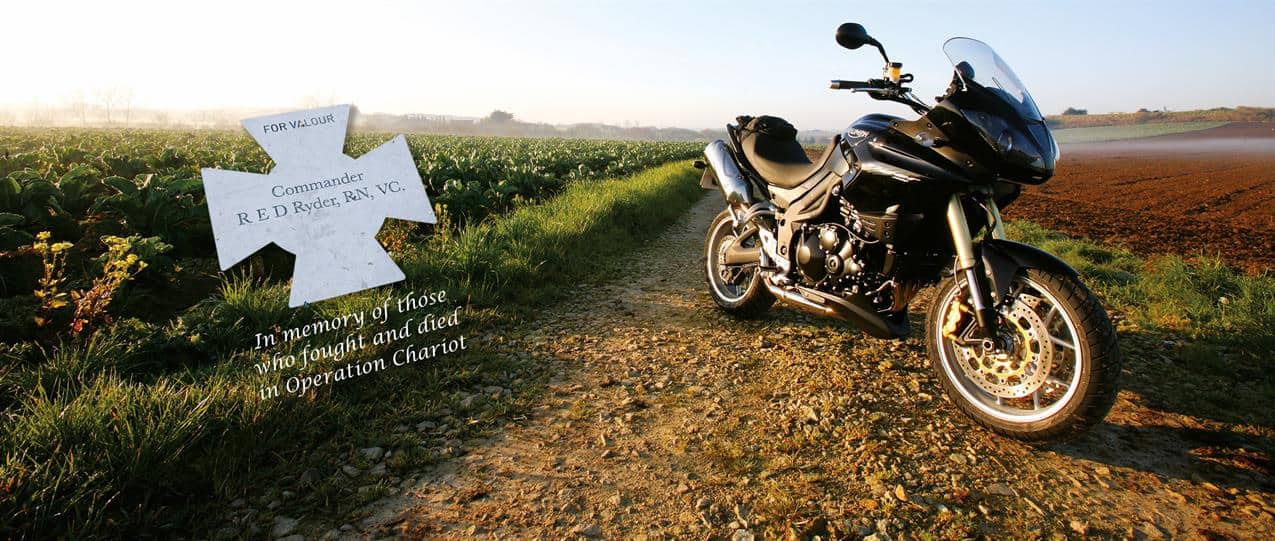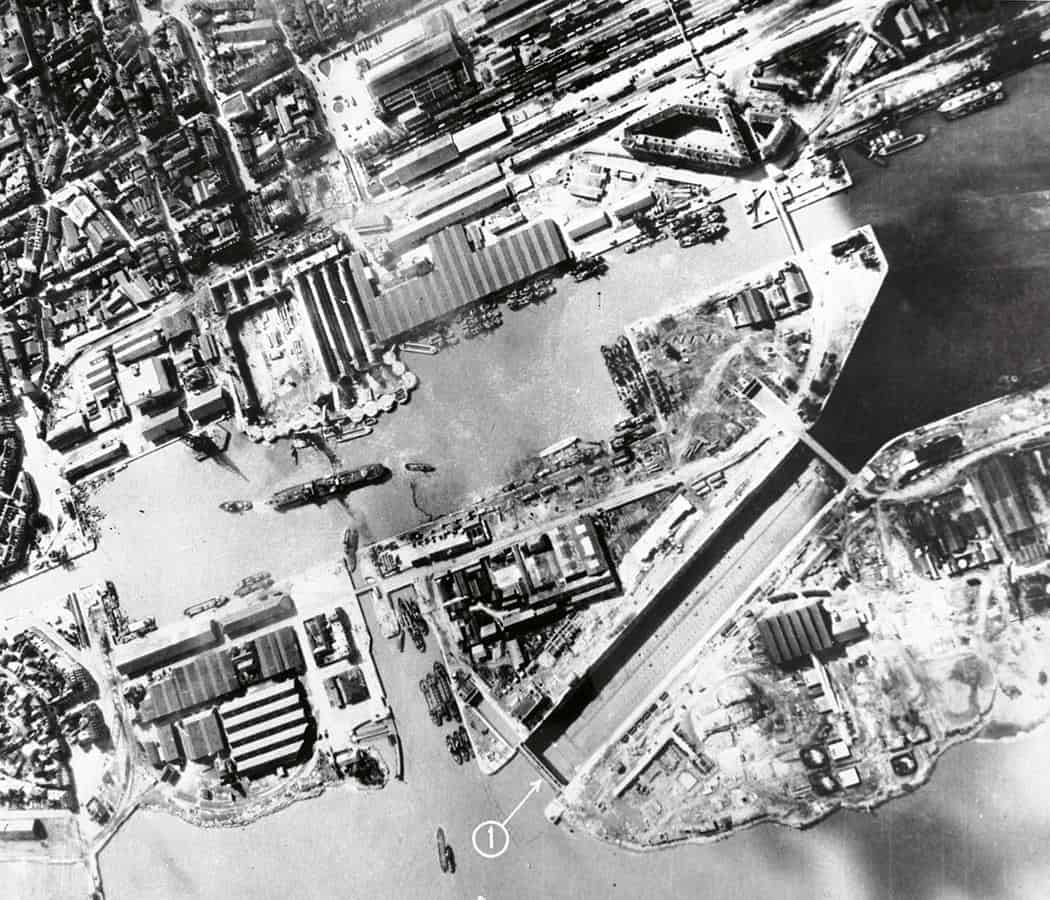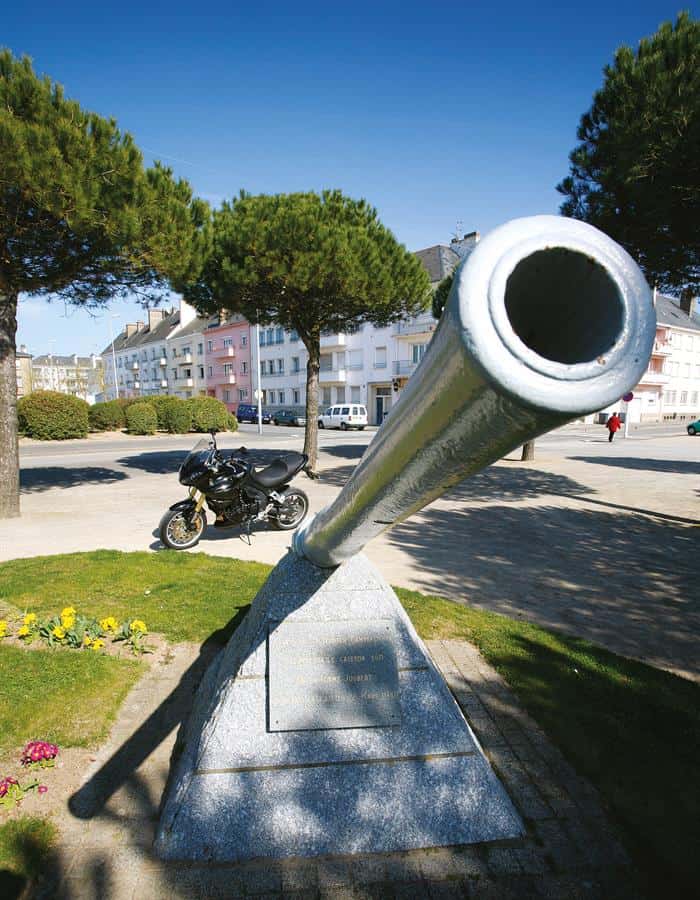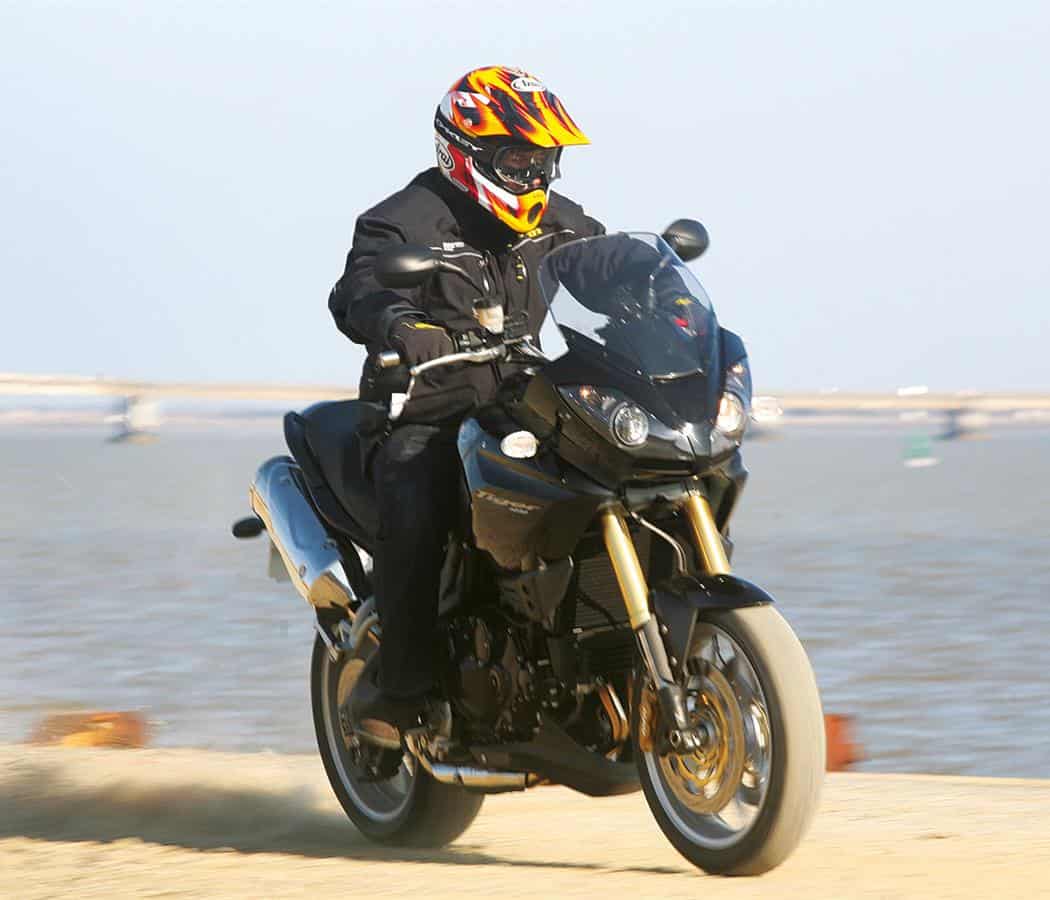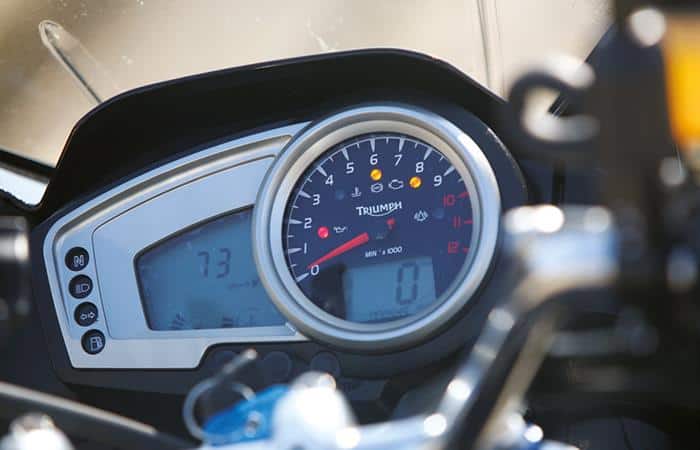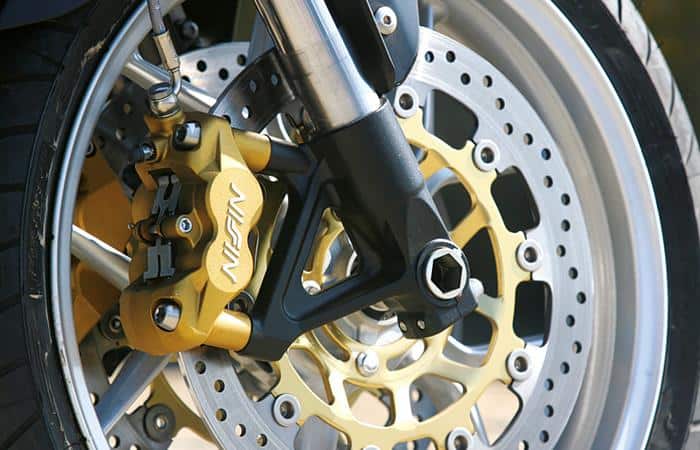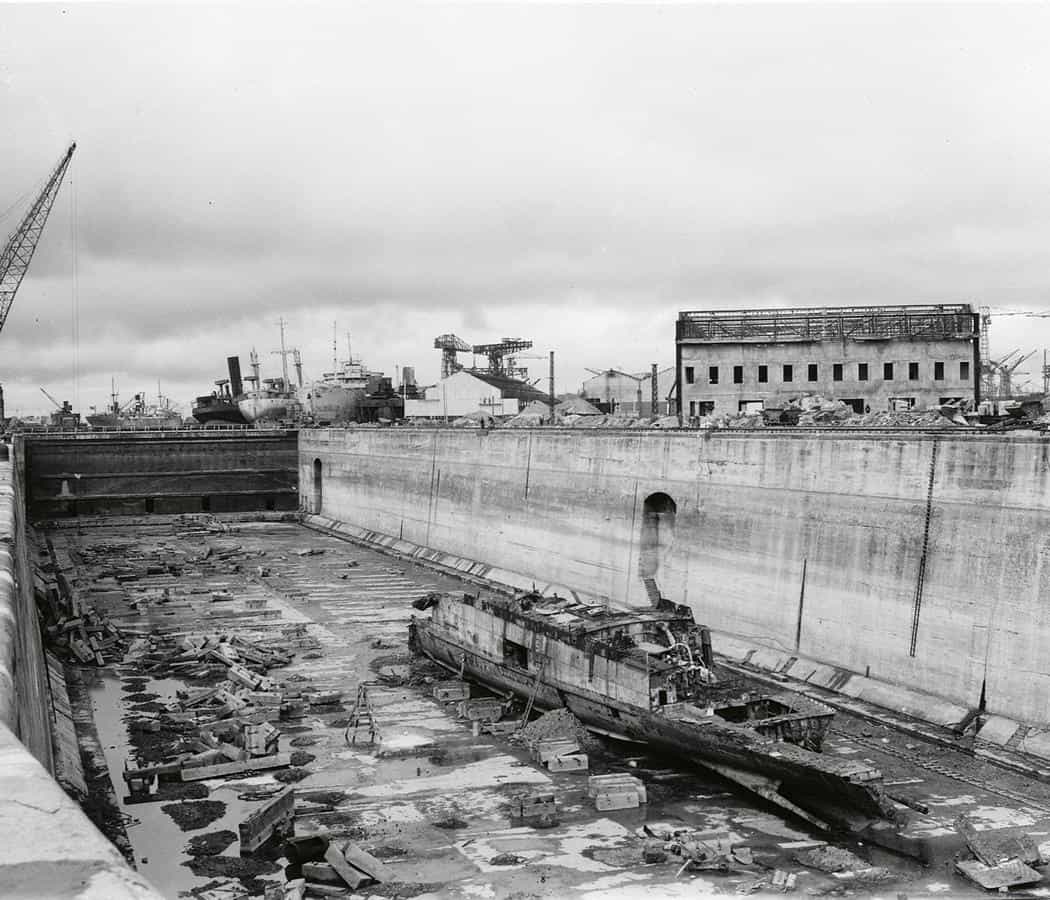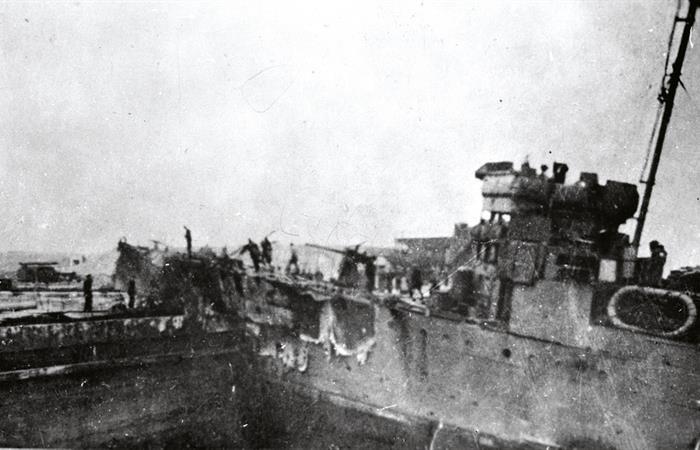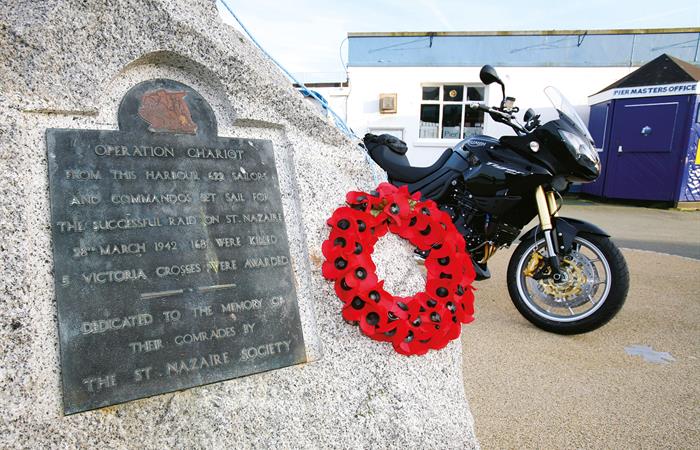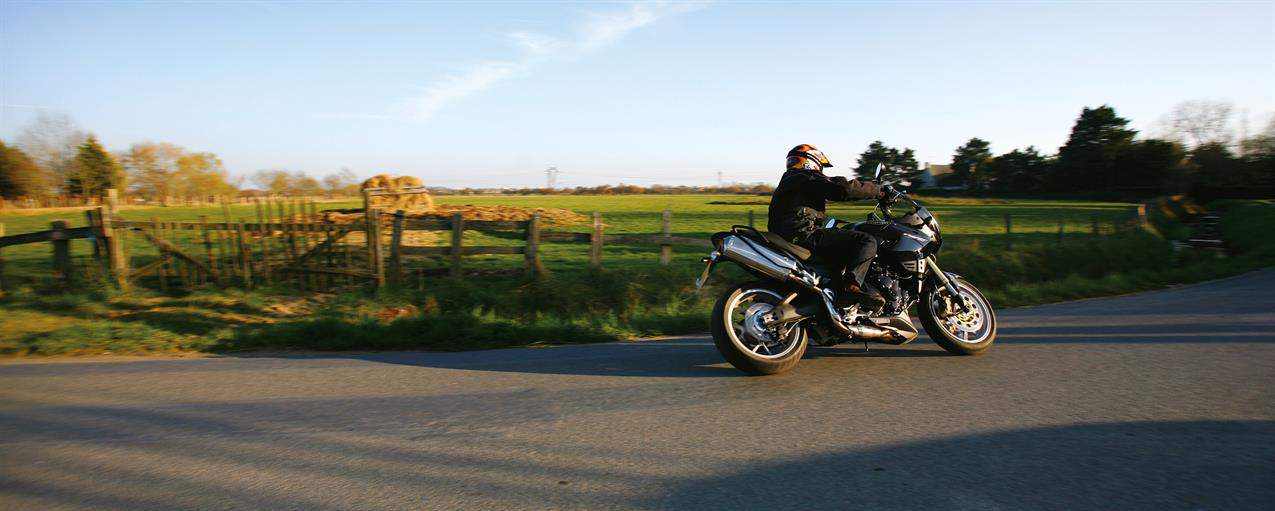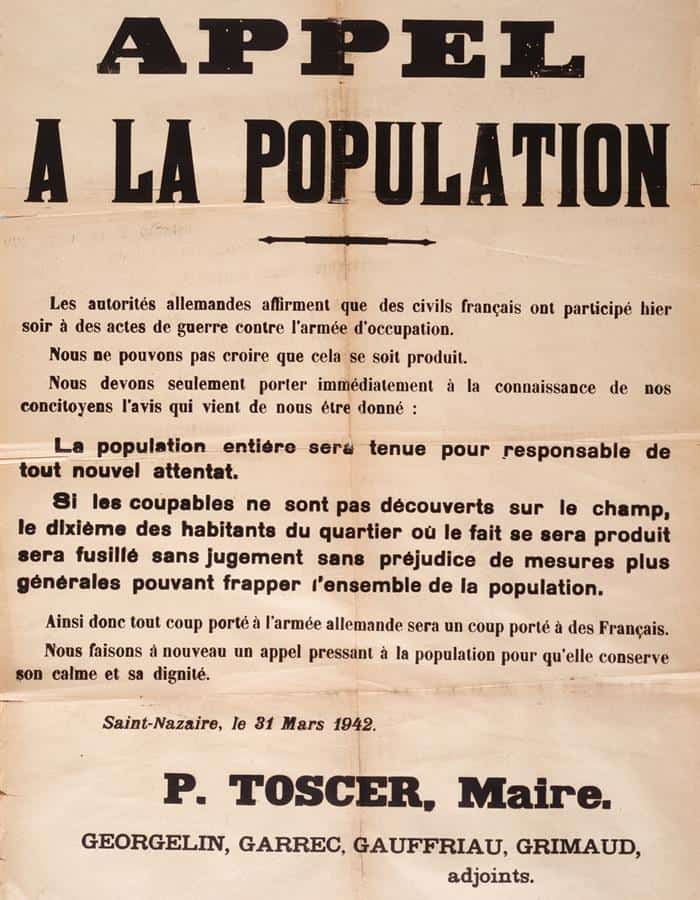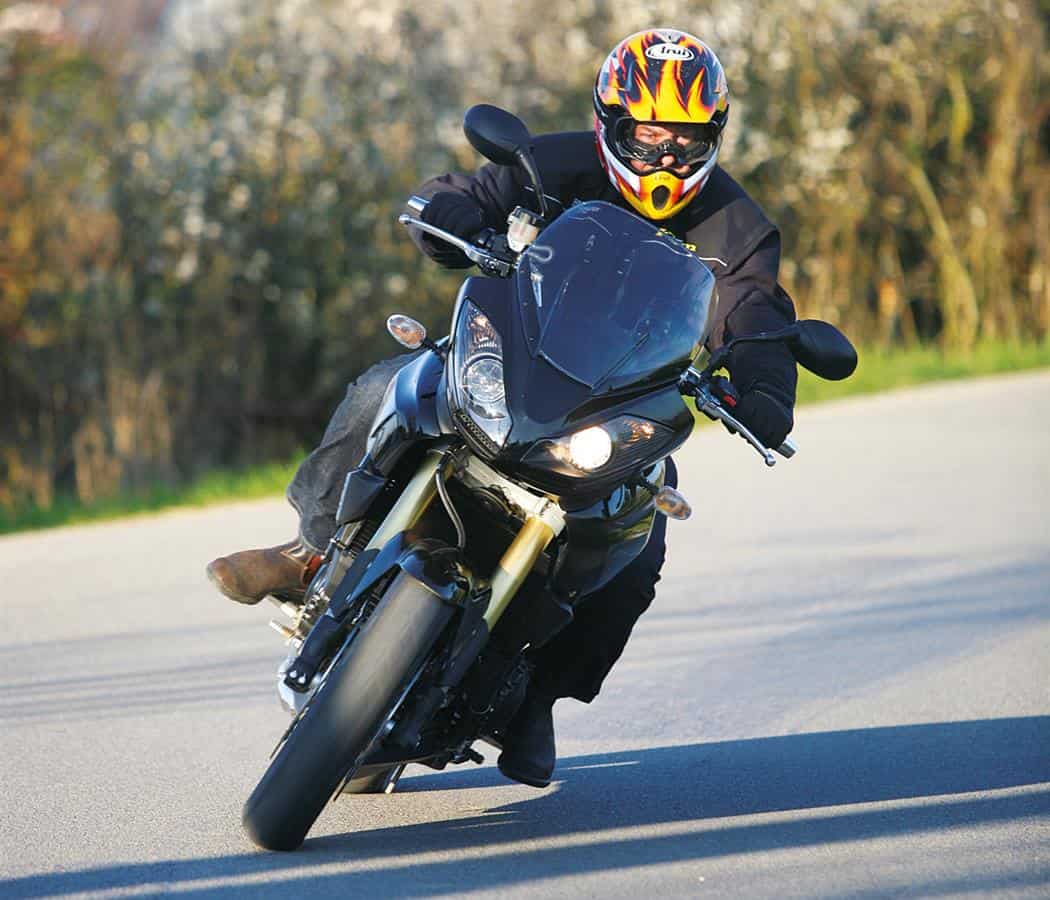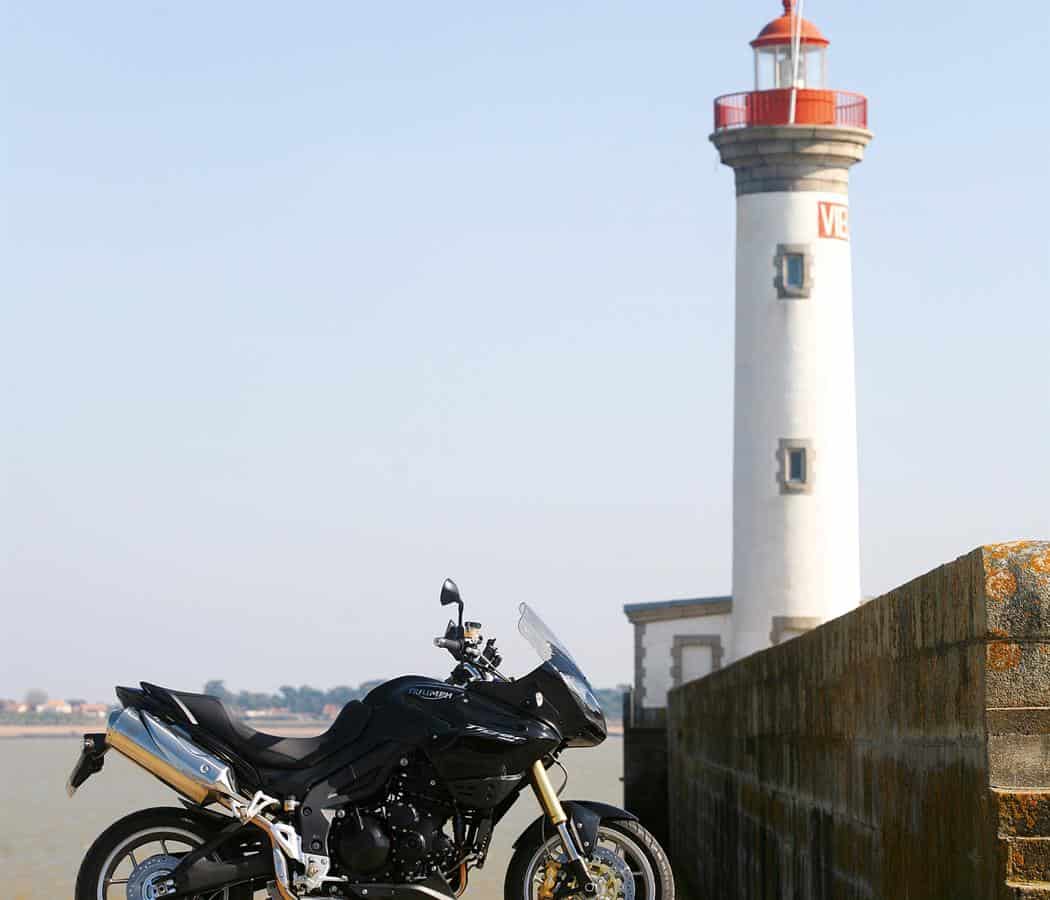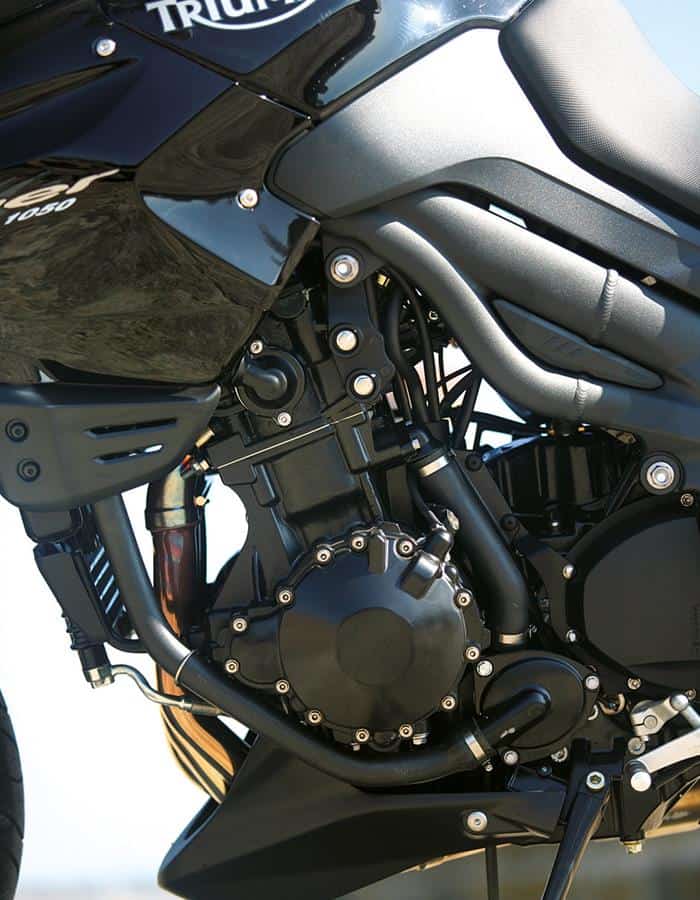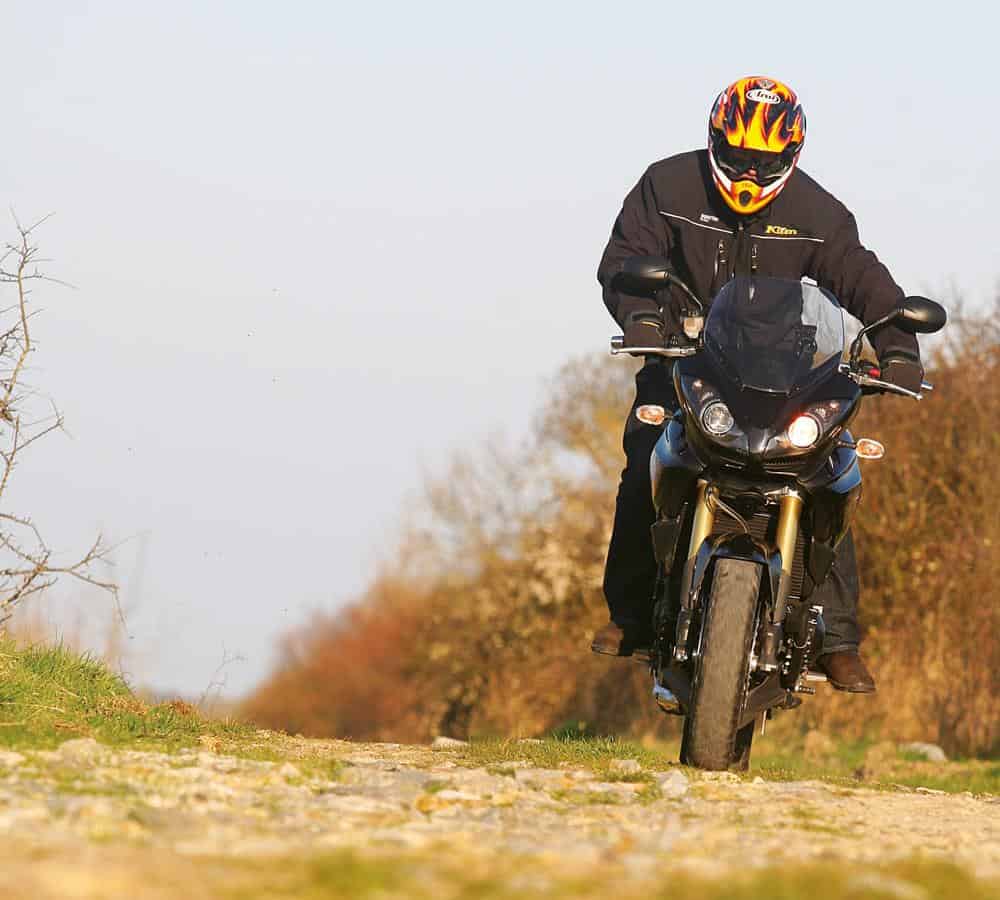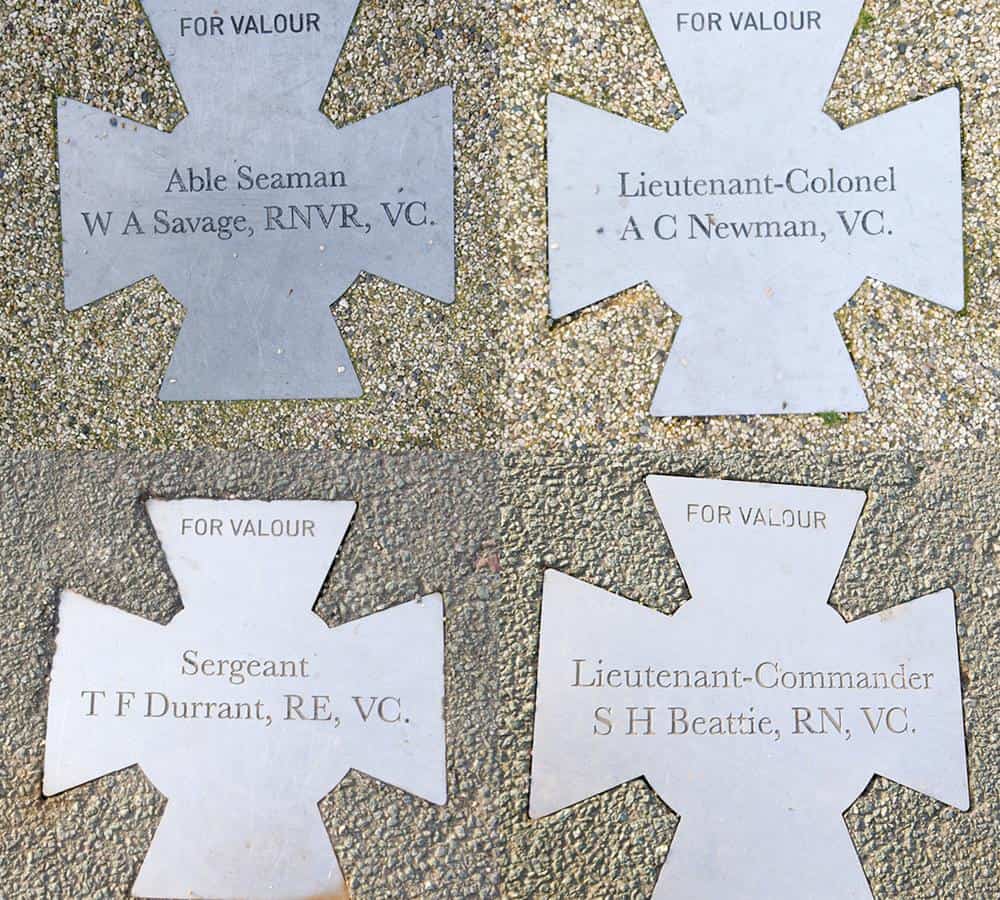The WWII commando raid on Saint Nazaire has been dubbed ‘the Greatest Raid of All’. On the anniversary of the legendary mission, we took a Triumph Tiger to the famous French port…
We crept out of Falmouth under cover of darkness, the chill night air broken by the hum of a powerful engine. Destination? Saint Nazaire, on the mouth of the Loire River on west coast of France.
Sixty-seven years earlier, 622 British commandos and sailors also left the Cornish harbour bound for Saint Nazaire. But for that brave number the journey had a very different purpose – Operation Chariot, one of the greatest (and certainly one of the most unbelievable) wartime raids. Ever.
Their mission was not to target the French port’s famous, and almost indestructible, German submarine pens but to irreparably damage the Forme Ecluse Loius Joubert, a dry dock better known simply as Normandie dock (after the cruise liner of the same name for which the dock was constructed in 1932). For the facility was the only place on the Atlantic coast large enough for the Germans to repair their giant battleship, the Tirpitz (sister ship to the infamous Bismarck), which was sitting menacingly in Norwegian waters. The Tirpitz posed a huge threat to the Allies’ Atlantic supply convoys and by destroying the dock it was hoped the Germans wouldn’t risk taking her into action in the Atlantic. Without the use of Normandie’, returning to Germany for repairs would risk running into the British Navy – who’d recently scored a major morale boost by sinking the Bismarck.
But when an air attack is too imprecise just how do you destroy a heavily guarded dry dock, partway up a shallow river estuary? With a whole heap of cunning, an immeasurable amount of courage and a great deal of high explosives!
Plan of Attack
I’ve long been fascinated by the story of Operation Chariot, and as its anniversary (28 March) rolled around it seemed the ideal time to pay tribute to those involved with a trip to the Normandie dock, and the memorial on the sea-front at Saint Nazaire.
It only seemed right to take a British bike to Saint Nazaire, and that really only gave us a choice of one machine for the 900-mile round trip – Triumph’s Tiger. Formerly a slightly podgy soft-roader, in 2007 Triumph gave the Tiger a bit more bite, building an all-new tarmac-adventurer around their latest 1050cc triple motor. Some owners may have been crazy enough to take their old Tigers away from the blacktop, but with 17in cast rims and radially-mounted brakes the new machine screams road-only. Perfect for a route which would take me down to Falmouth (to see the British memorial to the raid which stands on the harbourside there), back up to Plymouth to catch a ferry to Roscoff, down France’s west coast to Saint Nazaire, then back north to meet a return ferry at Caen. That was my plan set, but what about that of Operation Chariot? Well…
With help from French intelligence, a team of men headed by ‘Adviser on Combined Operations’, Lord Louis Mountbatten, hatched a plan to ram the dock with an explosive laden destroyer. Rather than exploding immediately, the charge would be delayed so that the ship could drop-off its commando passengers to perform further on-shore destruction, whilst another troop-carrying destroyer would accompany it and provide return transport. All the while, the RAF would run a diversionary bombing raid, in order to keep the German gunners occupied.
The admiralty was having none of it. Using two destroyers, and sacrificing one, was deemed an unacceptable waste and a huge risk. And Bomber Command didn’t seem sold on it either. But time and tide waits for no man, and when a date was identified that would allow a ship to sail in the shallows rather than the more heavily defended deep-water channel the admiralty conceded, and allowed the use of a vessel which ‘had seen better days’.
HMS Campbeltown had previously been the USS Buchanan – the Americans giving the ageing destroyer to the British Navy in 1940. Clearly the Germans weren’t going to allow a British ship to sale up the Loire unchallenged, so the Campbeltown was disguised to feature a silhouette similar to that of a German Möre class ship. Two of the four funnels were removed altogether, with the remaining pair slash-cut. The ‘big guns’ were removed, and armour was added to both the bridge and the decks, in order to give the 269 commandos onboard some protection.
The rest of the force would be carried on wooden motor launches – not really the kind of craft you’d want to take into the hellfire that awaited them in the Loire – and to make matters worse, these craft had their auxiliary petrol tanks mounted on-deck! In fact, so perilous was the mission that those taking part were initially given the option of pulling out, without fear of recrimination or reprimand. None did.
Two gunboats would provide extra support and the destroyers HMS Tynedale and HMS Atherstone would escort the ‘fleet’ towards their target. With the Campbeltown under the command of Lieutenant Commander Stephen ‘Sam’ Beattie, they sailed from Falmouth at 14:00 on 26 March 1942.
Setting Sail
Leaving Falmouth for the overnight Plymouth-to-Roscoff boat, I began to enjoy the Tiger. That big triple motor has such a broad spread of torque that you can simply stick it in a tall gear and waft along. It’ll pull from virtually nothing (under 40mph in top gear) without even a hint of complaint, and really gathers some pace through the mid-range.
This made the twisting road into Plymouth a real breeze, especially when the headlight seemed more intent on lighting the hedgerows than the way ahead. The beam spread wide across the road, but only when switched to (the excellent) main beam does it allow you to really press-on down a dark, unfamiliar road. Otherwise it was a case of constantly slowing down and speeding up, trying to read the tarmac between the hedgerows as oncoming headlights dazzled through a fly-spattered visor.
Rolling out of the ferry the next morning and into the chill Brittany air, I wondered what it must have been like sitting out on the deck of a ship in the Atlantic, with little but adrenaline and hearty banter to keep you warm.
The stop-start traffic on the minor roads around Roscoff highlighted just good the fuelling is on the Triumph. There’s no snatchiness, no flat-spots or stutters, just a super-smooth stream of power. Ahead lay three-hours of fast dual carriageway, and I settled down behind the screen for the long haul.
Initially I wasn’t too impressed with the Tiger’s riding position – the typical sit-up-and-beg style of a ‘big trailie’ tourer. Yet I soon got used to it, even if I found the seat just that little bit too low. The bars – nasty chromed steel parts that look like they’ve been pinched from a ‘70s bicycle – are pleasantly high, and give plenty of leverage for chucking the bike around. The seat is wide and soft, and although it is sculpted this doesn’t force you into one position. The screen channelled the on-rushing air just onto the top of my helmet, where it slipped on by without causing too much strain. Rather than testing neck muscles, it instead tested my earplugs with the roar of wind noise.
The dash isn’t the prettiest we’ve ever seen, the metallic plastic surround on the clocks giving it an air of Korean car interior, but it is particularly comprehensive. Along with the analogue rev counter and digital speedo, it features a clock, running time, average speed, max speed, fuel gauge (with a countdown showing the number of miles remaining ‘til empty) and more besides.
Like the dash, the switchgear is also a little cheap-looking. The plastic used on the switches themselves doesn’t feel all that robust and they don’t quite have the positive action of a quality part. And staying with the controls, the pegs and gear- and rear brake-levers are very much road parts. There’s precious little room to get the toes of a clumpy MX boot under the gear lever, again showing that this is very much a tarmac-only set-up.
Firm at the front, soft at the rear; the Tiger’s suspension could easily feel mismatched. However, unless you’re going scratching it’s not that bad. It might have wallowed a little in faster turns, but the back-end proved comfortable on long sections of dual carriageway. And for tackling roundabouts and arcing sliproads, the forks felt firm enough to really haul on the Nissins without diving like a U-boat. Still, some fine-tuning would definitely improve matters, even if the damping doesn’t quite have the same finesse of high-end suspension units.
At speed there’s a hint of high frequency vibration through the bars, though it’s through the pegs and seat that you feel the mechanical rumblings of the 1050cc triple. Not intrusive, but noticeable nonetheless.
Despite this, the motor is pleasantly smooth. There’s just enough character to set it apart from a slightly soul-less inline four, and the growl it emits once the tacho needle has passed five-grand is almost reason enough to buy one. Okay, maybe not, but it is a real aural delight. And the power is just as delicious. Although it pulls particularly strongly in the midrange there’s no defined powerband. Just wind on the gas and, after that split-second the triple seems to take to compose itself, it simply pulls hard. There’s no need to go chasing the redline, even if peak power is to be found just 600rpm shy of it (at 9400rpm), because there’s just such a great spread of oomph. For this type of journey – mixing open single-carriageway with four-lane autoroute – it’s nothing short of fantastic.
Under Fire
Outside the estuary, a beacon from the British submarine HMS Sturgeon was used to guide the fleet towards their target. It was just past midnight when the delayed-fuses on the 24 depth charges and four-and-a-half tons of Amatol explosive hidden in the depths of the Campbeltown were lit. Two different fuse types were used to guarantee an explosion, and although these meant that the ship would certainly ‘go up’, it was hard to predict exactly how many hours there’d be before detonation.
Passing a number of artillery batteries on their way into the Loire, the guns remained inexplicably quiet. By now the token ‘diversionary’ bombing raid nearby had finished, and done little more than alert the Germans that something was afoot. Having suspected parachutists, when none materialised the Germans turned their attentions to the water.
The fleet were almost upon the port before they were challenged – the Germans wrongly believing that no-one would dare launch an attack against such a seemingly impenetrable target. And even then, just to add to the enemy’s confusion, the British signalled back to them, in German, that they were damaged friendly vessels seeking repair.
Eventually the Germans caught on. And all hell broke loose. Despite suffering heavy strikes, the Campbeltown steamed onwards – albeit off-course! Luckily this mistake was rectified and, at 01:34, the destroyer ploughed into the gates of Normandie dock. Beattie turned to one of his compatriots on the bridge, ‘Well there we are,’ he commented, before looking at his watch and adding, ‘four minutes late.’
Commando Crawl
Having sailed straight past the turning for Saint Nazaire, my own arrival in the port was also later than planned, though I was soon amongst buildings and bridges which seemed so familiar from books and TV documentaries. In fact, despite WWII bombing raids destroying much of the town, the area where Operation Chariot took place remains largely as it was back in ’42. Nowadays the town mixes tourism with ship-building, and indeed Normandie dock has been restored to full working order – within its confines an enormous cruise liner being fitted out dominated the skyline. Similarly, the concrete bunker-like submarine pens still stand ominously by the dockside.
The grunty motor and commanding riding position make the Tiger a decent ride around town. I’d prefer the gearbox to be a little smoother, though. It shifts positively enough but the accompanying noise sounds like a shell being loaded into a 240mm cannon. ‘Kerrrlunk!’
Like the commandos, my plan was to return home that night, so there was precious little time to take in the structures which featured in the raid. The memorial on the seafront was a particularly moving tribute to those 168 men who gave their lives in the raid. Their names are listed out on a stone tablet, next to the forward gun from the Campbeltown which was recovered from the water decades after the raid. Because when the ship went up, it REALLY went up!
The Big Bang
In the face of strong enemy fire (especially aimed at those still trying to land), the commandos set about their demolition tasks. Amongst their targets were select bridges, and the pump house and windings for Normandie dock.
The plan was that once these objectives had been carried out, the men would be picked up by boats waiting at ‘The Old Entrance’ (a channel of water into the Saint Nazaire basin next to the Normandie dock) and ‘The Old Mole’ (a jetty located a short way down river from the dock). Unfortunately, whilst some boats had originally made it to land and deposited their men onto the dockside so that they might carry out their objectives, those which hadn’t been destroyed by German guns either couldn’t reach these rendezvous points, or were ordered to return with wounded men they’d already plucked out of the water.
Upon realising that their lift home had already left, commando leader Lieutenant Colonel Charles Newman remarked ‘well chaps, we’ve missed the boat. We’ll have to walk’.
The commandos had been trained in escape techniques, should they need to find an alternative route out of Saint Nazaire, and now they were putting this knowledge to good use. Many of the demolition crews had nothing more than pistols and grenades with which to fight off the far more heavily armed Germans. But fight they did, sometimes so fiercely that the enemy simply turned and ran. Unfortunately, a number of commandos were killed attempting to battle their way out of the area, whilst as dawn broke many were captured in Saint Nazaire. Others (including Newman) almost made it to open countryside before running out of ammunition and being detained by German soldiers. However, some did make it away from the town (after hiding away during daylight hours), and returned to Britain – in some cases via Spain, some 600km south of Saint Nazaire!
Many of those captured by the Germans were immediately photographed for use in German propaganda showing how the raid had failed. Little did they know what was coming…
The Campbeltown was crawling with German soldiers, some collecting souvenirs, when at 11:30 the explosives detonated. The blast was huge, ripping apart both the ship and the dock’s caissons, sending debris hundreds of feet into the air and shock waves surging across the river and the town. In thinking that the British had simply sought to ram the dock gates and scuttle a ship, the Germans had made a grave error of judgement…
Raiding Party
On the rural roads out of Saint Nazaire the Tiger proved great fun. The chassis isn’t quite as sharp as it could be, but it remains unflustered at speed and (slightly soft rear-end aside) its stability is reassuring when throwing it into fast turns.
The four-piston, radially-mounted Nissin calipers provide great stopping power though they do lack a certain amount of initial bite – you really have to give the lever a good hard squeeze to get the best out of them. Our bike came with the £600 optional ABS and I was pleased to find that, at the front at least, it didn’t prove even remotely intrusive, even on the roughest of roads. At the back it seemed to cut in a little too early…
For me, the Tiger’s all about that motor. It’s just so easy to use, equally great for hooning along at three-figure speeds or pootling around just above idle. Smooth, powerful and with a great sound, I loved it. And just to top things off, it returned nearly 50mpg on this journey – giving a 200-mile tank range!
At £7999 (or £8599 for the ABS version) the Tiger isn’t what you’d call a bargain, and it lacks the finishing to really get your juices flowing every time you open your garage door. However, the competition (BMW’s 1200GS, the KTM 990SM-T) are a good thousand pounds more expensive, and if you’re quick you can pick up an £800 Triumph accessories voucher with your Tiger. That should just about get you a set of hard luggage!
If your motorcycle adventuring takes in any off-road more technical than a dirt track then the Tiger’s road-biased chassis, smooth power delivery and quick revving motor mean it’s definitely not the bike for you. If you’re sticking to the tarmac and you’re after a versatile machine to make crossing countries a real breeze, and a bit of a hoot too, then it’s gotta be on your list.
Huge thanks to: Phil Howell and Rod Veck at Fowlers for pulling out all the stops and loaning us a brand new Tiger at short notice, Thérése Dumont at L’Ecomusee in Saint Nazaire for her help obtaining period photos, and Chris Evans for his valuable assistance!
Test Ride
We borrowed our Tiger from the friendly folk at Triumph dealers Fowlers in Bristol. As well as having the British brand within their giant multi-level showroom, Fowlers also stock Honda, KTM, Suzuki, and Yamaha, along with a wide range of clothing and kit. What’s more, they always seem to have great deals in-store, and you can even grab a bite to eat between browsing at their on-site eatery – ‘Harry’s Café’.
You’ll find Fowlers on the Bath Road in Bristol, and you can call them on 0117 977 0466, or 0117 972 5505 if you want to talk Triumph. www.fowlers.co.uk
Triumph Tiger 1050
Price: £7999 OTR (£8599 with ABS at the time article first published)
Engine: DOHC, 12-valve, triple
Displacement: 1050cc
Bore & stroke: 79 x 71.4mm
Transmission: 6-speed
Frame: Aluminium twin spar
Front susp: Showa 43mm USD, fully adjustable
Rear susp: Showa shock, adj preload/rebound
Front brake: Twin 320mm floating discs, radially-mounted four-pot Nissin calipers (ABS)
Wheelbase: 1510mm
Seat height: 835mm (claimed)
Fuel capacity: 20L
Weight: 198kg (dry, claimed) 201kg with ABS
Contact: Triumph UK on 01455 251700 www.triumph.co.uk
In honour of those who fought, and died,
in Operation CHARIOT
Five men – Lieutenant-Colonel Augustus Charles Newman, Sergeant Thomas Frank Durrant, Commander Robert Edward Dudley Ryder, Lieutenant- Commander Stephen Halden Beattie and Able Seaman William Alfred ‘Bill’ Savage – were awarded the Victoria Cross for their actions in Operation Chariot (the most awarded in any single action in WWII). The Germans opted not to attempt a working repair on Normandie dock, replacing the damaged caisson with a dam instead. And the Tirpitz never did see active duty in the Atlantic, remaining in Norwegian waters until the RAF bombed her in 1944. Yet it wasn’t until 1945 that those captured in Saint Nazaire could return home to fully tell the tale of the raid.
For me, the journey back to Blighty mixed the satisfaction of finally visiting the site of this great raid with the emotion in seeing where so many fought so bravely. Though I cracked a smile when I arrived on the north coast of France, where the ferry awaited. Somewhat fittingly, emblazoned on its bow was the name ‘Normandie’…
If you’re interested in more features on Triumphs, you may want to check out the Tiger 800XC on the Normandy trails, in which case click here… https://rustsports.com/life/normandy-trails-on-a-tiger-800xc_3896.html
Or the new Triumph Scrambler, pitted against the Ducati Scrambler Desert Sled in the latest issue.. https://rustsports.s3.amazonaws.com/RUST%2332.pdf
In addition you can check out our Triumph Tiger Explorer 1200 test in the Madagascar issue, here…

